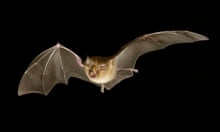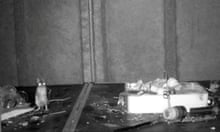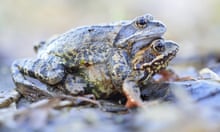In Sydney, sulphur-crested cockatoos play when they fly, ducking under power lines and soaring up again, squawking, charging through gaps in trees, landing only to hang upside down, as though they are mocking the bats. Cockatoos know how to have as much fun as it is possible to have while flying (a lot).
In a painting by William Patrick Roberts of a mother and her children looking at parrots in a shop, the macaws and the black cockatoo perch majestically; at the bottom of the painting a cockatoo fools around on a pole, looking right at you.
A reader and I emailed about cockatoos. “I remember seeing a pair on the roof of the house next door alternately stick their heads down the chimney pot,” she wrote, “I look forward to reading an exposé.”
They have so much fun because they are so clever. They know how to get fed by people: they are like babies; you can’t ignore their squawks. The cockatoos that visit the jungle home of my in-laws arrive at similar times each day. If their squawks aren’t answered quickly enough with a handful of striped sunflower seed, they start to chew on the wooden railing of the balcony, raising and dropping their pale yellow crests like frowns.
Patrick White described their crests “flicked open like a many-bladed pocket knife”, their feathers at sunset “white-to-sunsplashed”. The innocent cockatoos in his sinister short story seem to float when they are on the ground, as though in the water that is everywhere in Sydney. When they flew, he wrote, they “rose in a wave … and broke on the shores of holm-oak and araucaria in the park opposite”.
Cockatoos don’t just dance, they have invented moves – one, named Snowball, has 14, including spectacular headbanging, bobbing, swooping, stamping in time to music (the Backstreet Boys).
They have learned to open enormous red-lidded bins – the only ones containing food, rather than recycling.
On YouTube, one cockatoo sits on “the egg” of a pregnant woman’s stomach. A commenter on another video writes, “They are very high maintenance, scream, chew and will drive the neighbourhood crazy.” Where there are city birds, there will be bird people, feeding “kilos of bread and seed” to cockatoos every day.
Where you have people feeding birds, you have neighbours complaining to the council. “‘You know what’s really frustrating? The hours of screeching,” one person will say. And the council will remind them that cockatoos are protected. And an editor will make sure to include a large closeup picture of a particularly magnificent cockatoo showing no remorse.
When you see cockatoos feeding on the ground, search the trees above them: there will always be at least once keeping watch. I saw him recently: high up in a dead tree. A storm was coming and the clouds were dark grey. There seemed to be almost no sunlight left, but somehow the cockatoo had found it and caught it: his white feathers glowed brightly. His crest was up: eyebrows raised, excited for what was coming, thrilled to be here, to be king, to be the cleverest of them all.
Helen Sullivan is a Guardian journalist.
Do you have an animal, insect or other subject you feel is worthy of appearing in this very serious column? Email helen.sullivan@theguardian.com










